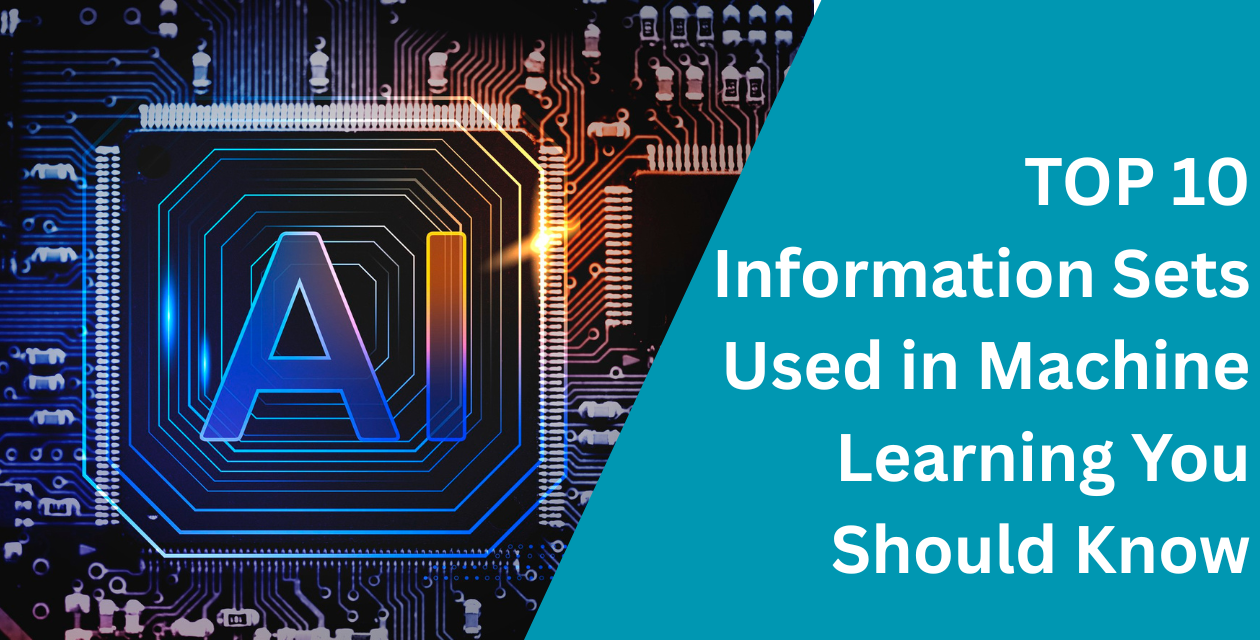Introduction
Machine learning thrives on data — it’s the fuel that powers AI models. But not just any data will do. The quality, variety, and structure of datasets determine how smart and accurate your machine learning system becomes.
If you’re stepping into the world of machine learning, you’ll quickly discover that knowing the right information sets is crucial. From recognizing images to predicting prices, datasets are the starting point for every algorithmic success story.

Why Datasets Matter in Machine Learning
Think of datasets as the “training material” for machine learning models. Just as humans learn from experience, machines learn from examples — datasets filled with labeled or unlabeled information.
High-quality datasets ensure:
- Better model accuracy
- Reduced bias
- Reliable predictions
Without them, even the most sophisticated algorithms can fall flat.
1. MNIST Dataset
The MNIST dataset (Modified National Institute of Standards and Technology) is the “Hello World” of machine learning.
It contains 70,000 grayscale images of handwritten digits (0–9), each sized at 28×28 pixels.
Applications:
- Digit recognition models
- Image classification experiments
- Neural network testing
Why It’s Popular:
It’s small, simple, and ideal for beginners to understand image-based classification techniques.
2. CIFAR-10 and CIFAR-100
The CIFAR datasets are the next step after MNIST.
- CIFAR-10 contains 60,000 color images in 10 categories (like cars, cats, and airplanes).
- CIFAR-100 expands this to 100 categories.
Applications:
- Deep learning experiments
- Image classification
- Convolutional Neural Network (CNN) testing
Why It’s Useful:
Its color diversity and complexity make it perfect for evaluating performance on more realistic image data.
3. ImageNet
When it comes to large-scale image datasets, ImageNet reigns supreme.
It features 14 million labeled images across 20,000 categories, making it one of the most comprehensive datasets ever built.
Applications:
- Object recognition
- Image classification
- Transfer learning
Fun Fact:
Many famous architectures (like AlexNet and ResNet) were first benchmarked using ImageNet.
4. Iris Dataset
A true classic — the Iris dataset is small but mighty.
It includes measurements (like petal and sepal length) for 150 flowers across 3 species.
Applications:
- Classification problems
- Educational tutorials
Why It’s Timeless:
It’s perfect for beginners to learn data preprocessing, visualization, and model evaluation.
5. COCO (Common Objects in Context) Dataset
The COCO dataset takes image recognition to another level by providing context.
It contains over 330,000 images labeled with 80 object categories, including bounding boxes and segmentation masks.
Applications:
- Object detection
- Image segmentation
- Scene understanding
Why It Stands Out:
COCO doesn’t just identify what’s in an image — it helps understand where and how objects interact.
6. Boston Housing Dataset
If you’ve ever done a regression task, you’ve likely come across this dataset.
It includes information about housing prices in Boston, with features like crime rate, number of rooms, and proximity to employment centers.
Applications:
- Regression models
- Predictive analytics
- Economics and real estate forecasting
Insight:
It’s ideal for understanding how multiple factors influence continuous target variables.
7. Wine Quality Dataset
This dataset is a favorite among data scientists who enjoy mixing analytics with real-world flavor.
It includes physicochemical properties of red and white wine samples and their corresponding quality scores.
Applications:
- Classification and regression
- Data preprocessing experiments
Why It’s Great:
It helps learners understand how feature scaling and correlation affect predictions.
8. Labeled Faces in the Wild (LFW)
Facial recognition has become mainstream, and LFW paved the way.
This dataset contains 13,000 images of human faces, labeled with the names of the individuals.
Applications:
- Facial recognition systems
- Identity verification
- Emotion detection
Ethical Note:
Always ensure facial data is used responsibly and respects privacy.
9. Amazon Reviews Dataset
If you’re diving into Natural Language Processing (NLP), this dataset is gold.
It contains millions of product reviews with ratings, categories, and text data.
Applications:
- Sentiment analysis
- Text classification
- Recommendation systems
Why It’s Valuable:
It’s a realistic example of how companies use AI to understand customer behavior.
10. Google’s Open Images Dataset
This is one of the largest public image datasets — containing over 9 million images with object-level annotations.
Applications:
- Object detection and segmentation
- Visual relationship modeling
- AI-powered vision systems
Advantage:
The annotations include bounding boxes, attributes, and labels for diverse real-world scenes.
Choosing the Right Dataset for Your Project
Before picking a dataset, ask yourself:
- Does it align with my problem type (classification, regression, etc.)?
- Is it clean and well-labeled?
- Is it large enough to train a reliable model?
Tip:
Always split your dataset into training, validation, and test sets to prevent overfitting.
The Future of Machine Learning Datasets
The future is all about synthetic and open datasets.
AI systems can now generate their own training data — reducing privacy concerns and bias.
Trends to Watch:
- Synthetic data generation tools
- Federated learning for privacy
- Global open-data collaborations
Conclusion
In the world of machine learning, data is everything.
From MNIST to ImageNet, each dataset offers unique learning opportunities.
Whether you’re a beginner or a professional data scientist, understanding these top 10 information sets helps you choose the right tools to build smarter, more reliable models.
The MNIST dataset is one of the most used, especially for beginners in image classification.
COCO and Google’s Open Images Dataset are ideal for object detection tasks.
Synthetic datasets are artificially generated data used to train models without real-world data.
Yes, combining datasets can improve performance — but ensure consistency and compatibility.
You can explore Kaggle, UCI Machine Learning Repository, and Google Dataset Search for open datasets.



